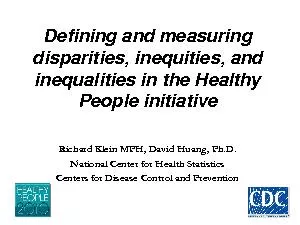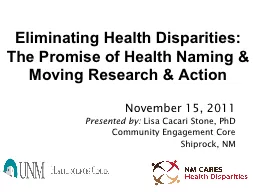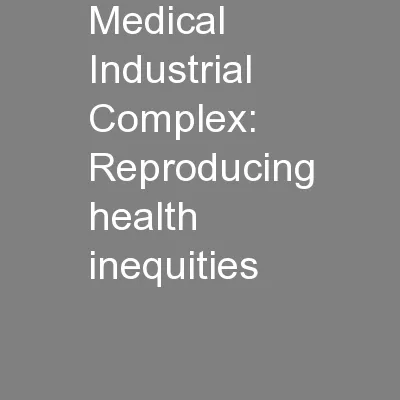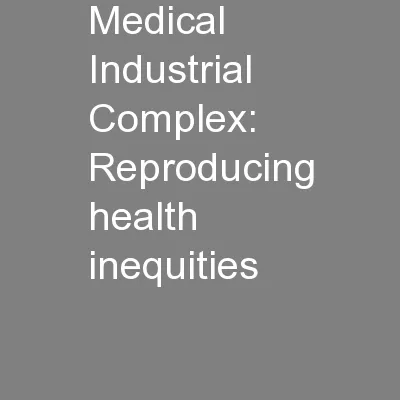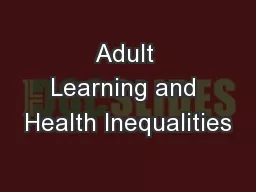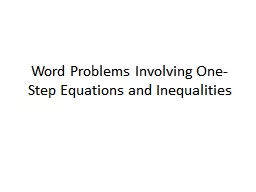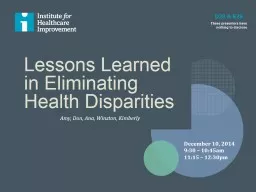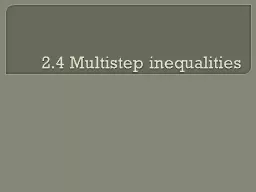PDF-Defining and measuring disparities, inequities, and inequalities in th
Author : olivia-moreira | Published Date : 2015-08-14
Four Concepts of DifferenceDisparityInequityInequalityBurden Research questionApplication to policy or program planningDisparityIs there a difference in health status
Presentation Embed Code
Download Presentation
Download Presentation The PPT/PDF document "Defining and measuring disparities, ineq..." is the property of its rightful owner. Permission is granted to download and print the materials on this website for personal, non-commercial use only, and to display it on your personal computer provided you do not modify the materials and that you retain all copyright notices contained in the materials. By downloading content from our website, you accept the terms of this agreement.
Defining and measuring disparities, inequities, and inequalities in th: Transcript
Download Rules Of Document
"Defining and measuring disparities, inequities, and inequalities in th"The content belongs to its owner. You may download and print it for personal use, without modification, and keep all copyright notices. By downloading, you agree to these terms.
Related Documents

